FOX 36 FLOAT FIT RC2 2016 Suspension Fork
(discontinued)
| Where To Buy | |||
|---|---|---|---|
Free shipping on orders over $50 (continental U.S. only).
International shipping available. Some exclusions apply. |
|||
Free shipping on orders over $50 (continental U.S. only).
International shipping available. Some exclusions apply. |
|||
Review by Johan Hjord // Photos by Tal Rozow and Johan Hjord
FOX’s 36 fork has in many ways always been leading the company forward, and this has certainly been true over the past few years. The 36 was the first fork in FOX’s lineup to receive the major recent updates that were then rolled out to the rest of the range for 2016, and it certainly had our attention as of the 2015 model year. For 2016, the 36 sees some further tweaks, and tweaks always leave us curious, especially when it comes to suspension products. Moreover, we wanted to really pit the 36 against the current de-facto “standard” trail bike fork to see where it might differ, and how. Bear in mind that this is not a shootout, but rather a review of the latest version of the 36 in light of its current main competitor.

2016 FOX Float 36 RC2 Highlights
- Made for Trail/All-Mountain/Enduro/Freeride use
- 36mm Kashima coated stanchions
- New FLOAT air spring system
- Tunable air spring via volume spacers
- Refined RC2 damper with sealed FIT cartridge
- External adjustments: Rebound (19-clicks) // Low-speed compression (22-clicks) // High-speed compression (26-clicks) // Air spring
- 140, 150, 160, 170, and 180mm stock travel options
- Internally adjustable travel in 10mm increments (sold separately)
- 26, 27.5, and 29-inch models
- Aluminum tapered (26, 27.5, 29) and straight 1 1/8-inch (26 only) steerer options
- Convertible 15/20mm thru-axle
- 180mm post mount disc brake tabs
- Weights ranging from 4.38-pounds (1987 grams) – 27.5” model, claimed
- MSRP: $1050 USD as tested
Initial Impressions
We had excellent impressions when we first tested the 2015 version of the FOX 36, and subsequent experiences with the same fork on other bikes left us equally impressed. While some might argue that comparing the FOX 36 to the RockShox Pike is actually a bit like comparing apples to oranges, we’d argue that this is still the comparison that will speak directly to the largest number of riders out there – simply because of the popularity of the Pike. Sure, the Lyrik is now back in the RockShox line-up, and on paper, it is certainly the fork that compares most directly to the 36. However, if you look at how the Pike is being specced and ridden, it is fair to say that it is the current “standard” hard-charging trail bike fork and as such, we felt it would be an appropriate reference and one that many can relate to.

We took delivery of the 27.5”, 170mm travel, RC2 version of the 36, and paired it up with FOX’s all-new Float X2 shock out back (our review of the X2 will follow shortly). Right out of the box, first impressions are convincing. The finish is rich and smooth, and the fork gives off a very sturdy vibe. One of the more significant improvements on this latest generation (2015-2016) of the 36 is the weight. Despite its menacing looks, the fork feels light – ours weighed in at 2021 grams with an uncut steerer (around the claimed 1987 grams once cut).

Examining the knobs, the impression of quality continues. The adjusters feel solid with well-defined clicks. The 36 offers hi- and lo-speed compression adjustment up top, and adjustable rebound at the bottom of the drive side leg. Additionally, the airspring’s progressivity can be tuned with volume spacers – adding or removing spacers is a 5-minute job. The fork comes with one spacer pre-installed, and a further 5 spacers of different volume in the bag of accessories.

The 36 is compatible with both 15- and 20-mm axles thanks to a clever insert system. There is no quick release available on the RC2 models, but if you opt for the FIT4 version you can have the fork delivered with a 15mm QR axle.

The 36 Float series offers adjustable travel, although the procedure here is significantly more involved than on the volume spacer side. There are 2 basic configurations, the 160-mm fork that can be adjusted down to 110-mm, and the 170/180 which can be reduced down to 130. Note that FOX does not sell a 180-mm version of the 27.5” fork, but the 170-mm version can in fact be extended to 180-mm of travel by removing a travel neg plate spacer. Also note that the airsprings are optimized around the baseline travel setting, straying too far will likely have a negative effect on performance. In other words, if it’s a 120 or 130mm fork you need, you’re probably better off with a FOX 34.

When the 36 was overhauled in 2015, a number of key improvements were made in order to reduce overall system friction. Improved Kashima coating, special 20 weight “Gold Bath” oil, and increasing the distance between the bushings in the lowers, among others. The 2016 version saw a revision to one of the damper side pistons that aims to improve rebound recovery and provide a plusher feel to the compression cycle. And with all that said, it is high time to find out what it all means on the trail…
On The Trail
The 36 is a hard-hitting fork and as such, it comes with 180-mm postmount brake tabs. If you run 203mm rotors up front, note that the jump from 160 to 183 isn’t the same as the jump from 180 to 203 (strangely enough), and the perfect adapters for the job can be hard to come by. FOX sells a 180-203 adapter kit under part number 820-09-009-KIT, which retails for $35.00 if you need it. Otherwise the best solution is to run 180 or 200-mm rotors, and use a “+20mm postmount” adapter for the latter. In our case, a little spacer was needed to align the brake caliper and the rotor perfectly, but other than that, the installation was smooth. Note that the current generation of the 36 has a lower axle to crown compared to its predecessors, which meant that replacing the 160-mm Pike on our test bike with this 170-mm 36 resulted in only an extra 7-mm on the A2C and a minimal impact on the bike’s geo. Switching to the Float X2 shock also gave us a bump in travel out back, up from 165-mm to now match the front at 170-mm.

We started the test running the 15mm axle. Performing the usual parking lot maneuvers, checking the front-end for stiffness and friction, the first impression is of a seriously solid chassis. This thing was built for charging and it shows. The second aspect that stands out early is a different, almost muted feeling to the fork, especially at low to moderate speeds over uneven surfaces. It is certainly not harsh, but it still lets you know that something is going on beneath the wheels. Riding the Pike and the 36 back to back on the same test loop, this muted feeling of the 36 persisted, even when we backed the compression damping right off.

We started off with one volume spacer and the suggested 79psi, which turned out to be a bit much for this 190-pound tester. Dropping it down towards 70, the fork would still not use all its travel except on the biggest hits. We began testing with FOX’s recommended settings on compression and rebound, which ended up being close to our day-to-day settings, with the exception of high speed compression which we backed off quite a bit. Even with just one volume spacer and relatively low air pressure, the fork is still very economical with how it uses its travel, giving up the last inch or so only when absolutely required. This translates to a lot of control and a bottomless feeling, especially when getting airborne.

As speeds pick up and the trail gets rougher, the 36 comes into its own. The word that comes to mind first when describing the way this fork performs is control. It never seems overwhelmed and the way it deals with medium sized hits and bigger chunk is extremely confidence inspiring. The chassis is exceptionally stiff which translates to improved precision, and the way the wheel tracks the ground provides a ton of grip. There is a bit of a whooshing noise going on as the fork rebounds, a good reminder that while you are enjoying the view behind the handlebars, there’s a lot of technology hard at work beneath you taking the drama out of the trail. It’s a good thing too, because the fork knows to make itself forgotten otherwise.

The 36 gives you control over both high speed and low speed compression damping in addition to rebound. As previously mentioned, the progressivity of the air spring can be tuned with volume spacers. Unlike the Pike, there is no lockout or pedal-assist mode, but when it comes to forks, that is never the first feature we look for. The adjustments on the 36 provide a very wide, usable range of settings allowing you to dial it in to suit your riding style and terrain. We experimented with additional volume spacers but eventually came back to just one. For reference, we ended up with about 5-6 clicks from fully OPEN on the high speed compression side, with low speed compression at 14-16 clicks from closed, and rebound at 10 clicks from closed. 1 token and 70 psi proved to be our sweet spot for most trails.
About halfway through the test, we converted the front axle from 15 to 20-mm. The procedure is simple, if anything removing the 4 (!) pinch bolts and the screw-in axle was almost the most time-consuming part here.

We almost wish we could say we noticed an effect on the stiffness or the performance of the fork as a result of fitting the bigger axle, but that was not the case. The truth is that a 15-mm front axle is more than stiff enough for anything you would ever consider putting a fork like this through. But having a fork that can do both is still awesome, especially if you own a DH bike and like to swap wheels now and then. One positive aspect of the pinch bolt system of the 36 is that the axle is allowed to float on one side before being locked down by the pinch bolts, which means that any hub width fluctuations will not affect the alignment of the fork lowers, which could otherwise cause some amount of bushing bind in extreme cases. On that very topic, we have not noticed any particularly significant occurrences of bushing bind on the 36, no doubt aided in this by the bigger bushing overlap and the generally low level of friction present in the fork.

To sum up our experiences with the 2016 FOX Float 36 RC2, it is clear that FOX has caught up with the leaders of the aggressive trail fork market. The new 36 is light, stiff, smooth, and offers almost complete adjustability. Back to back with the Pike, we feel that the Pike may still hold an edge in terms of how it deals with small bumps (as we previously alluded to, the 36 has a slightly more muted feel especially at cruising speed, which remains even with the compression dials backed all the way off). The tables are turned when it comes to the really rough stuff, here the 36 pulls slightly ahead with very impressive levels of control and poise. There is a slight weight difference (about 100 grams or so), and in real life also a financial penalty to the 36, it is up to you to decide if the differences between the 2 products is worth it. For this tester, the 36 took the performance of an already very capable bike up a notch further on the more serious trails, and we’ll be in no hurry to look for another fork at present. If we were, we’d probably look to the new Lyrik to provide an even closer match for the 36…
Things That Could Be Improved
For a fork that will certainly appeal to racers, finding a quick release solution for the front axle seems to be a real requirement. You can argue that if you flat in a world class enduro event your weekend is over, but every second counts when you’re still fighting for points, and grabbing your multi-tool to release 4 pinch bolts as well as the axle itself takes a lot longer than just winding out a QR. For the general public, we feel that the 15/20-mm compatibility and the slight reduction in weight is probably worth the inconvenience, as is the floating axle interface, but perhaps FOX should look into offering a race-oriented version of the RC2 with a choice of either 15 or 20-mm QR lowers.
The absence of any sag markings on the stanchions is inconvenient, as is the fact that there is no table of recommended pressures on the lowers. Sure, the 36 is essentially a high-end, pro-level fork, and you could argue that working out your settings involves more science than just looking at a rubber ring, nevertheless this is an area where FOX could make the product easier to live with.
A final word on the price. At MSRP, the 36 is not far off its main competitors, but the Pike in particular can be had for a lot less.
Long Term Durability
Previous generations of FOX forks were certainly a bit needy in terms of maintenance. The new 36 offers longer service intervals, although FOX still “unofficially” recommends a basic lower service every 50 hours. Depending on where you ride, this is pretty good practice with any fork, anyhow. Pulling the lowers to change oil and clean up the lowers is not a very demanding task on the 36, nor does it involve any special tools.
We’ve been on the 2016 version of the 36 for a good 2 months now, with no longevity issues to report at this stage. The performance of the fork remains the same, the finish has held up well to a few muddy rides, and all the adjustments remain easy to use with solid, confidence-inspiring clicks. We’ll keep a close eye on how the fork performs over the coming months, and we’ll report back towards the end of winter to let you know how it has been holding up.
What’s The Bottom Line?
Light, smooth, highly adjustable and just about as burly as you can make a single crown fork, the 2016 FOX Float 36 RC2 ticks all the boxes. It will compete on level terms with the main alternatives out there, and will really come into its own when the gnar factor increases. If it’s ultimate adjustability in a fork that packs a serious punch you’re after, look no further.
More information at www.ridefox.com.
About The Reviewer
Johan Hjord loves bikes, which strangely doesn’t make him any better at riding them. After many years spent practicing falling off cliffs with his snowboard, he took up mountain biking in 2005. Ever since, he’s mostly been riding bikes with too much suspension travel to cover up his many flaws as a rider. His 200-pound body weight coupled with unique skill for poor line choice and clumsy landings make him an expert on durability - if parts survive Johan, they’re pretty much okay for anybody. Johan rides flat pedals with a riding style that he describes as "none" (when in actuality he rips!). Having found most trail features to be not to his liking, Johan uses much of his spare time building his own. Johan’s other accomplishments include surviving this far and helping keep the Vital Media Machine’s stoke dial firmly on 11.
2 member reviews
After bouncing from Fox to Rock Shox, back to Fox, followed by Rock Shox, I’ve found myself happily settling with the 2016 Fox 36 Float FIT RC2. Don’t get me wrong, Rock Shox make outstanding forks that are perfect for different types of riding styles (Ultra light AM fork = Pike and Heavier hitter Enduro fork = Lyrik), but there are certain things that Fox has done with their 2016 Fox 36 Float that has won me over. Here are my impressions:
Out Of The Box:
The first thing I noticed when I got my 27.5” 2016 Fox 36 was how gorgeous it was. When the sun hit the Kashima coated stanchions I felt like a millionaire. The next thing I noticed was how remarkably light it was compared to previous year models. Weighing in at just a hair over 2000 grams this is definitely the lightest 36 to date. Years ago, it took hours of riding to break in a fork and have it feeling good. That is not the case anymore. Immediately after installed the Fox 36 Float felt unbelievable. The non-stick finish of the Kashima coat partnered with the low friction seals which come standard on this fork make the small bump sensitivity hard to beat. The FIT RC2 version of the Fox 36 float comes with low and high speed compression and rebound adjustments that can be adjusted on the fly (externally). This, mixed with a convertible 15 x 100 / 20 x 110 axle kit make the Fox 36 FIT Float fork the most adjustable fork in their history, and arguably in the history of the industry.

More Advanced Adjustments:
Last year could be called the era of the volume spacers. Although they were invented years ago, it seams most every high-end fork was outfitted with them. This is true for the Fox 36 Float as well. With little to no difference between the air springs from 2015 to 2016, the Fox 36 comes standard with these volume spacers - two sizes: 7.6cc (blue) and 10.8cc (orange).

The best part out these volume spacers is that you are able to increase your bottom-out control without having your initial storke (small bump sensitivity) being affected. The 2016 Fox 36 Float comes with a single blue (7.6cc) spacer installed. After experiencing a few fairly harsh bottom-outs, I removed this spacer by releasing all the air from my air shaft and unscrewing the top cap. I replaced it the blue spacer with 3 orange ones and couldn’t be any happier. I like an ultra soft initial stroke followed by a near impossible bottom-out end stroke and having 3 orange tokens gets me there. Once you get yours, play around with the volume spacers until you find what feels right for you. Note: the air shaft is capable of housing up to 4 spacers. If you install more than that, first off, it was install right, and secondly, your fork’s internals will be damaged.

Adjustable Travel:
The adjustability of the 2015/2016 Fox 36 Float is somewhat mind-blowing. Unlike other forks (cough..Rock Shox..cough) where you are limited between a 180mm/170mm, 160mm/150mm, 140mm/130mm, etc, the 36 Float has a much larger adjustability window. The 180mm/170mm forks can be adjusted from 180mm to 130mm and the 160mm forks can be adjusted from 160mm to 110mm (all within 10mm increments). This is HUGE if you like adjusting adjusting every single thing on your bike for the perfect vacation, like going to Whistler etc.
Although adjusting the travel is somewhat easy to do, there are certain steps that need to be done correctly as well as having all the additional parts to accommodate your desired travel settings. (For every 10mm you wish to reduce, you will need a10mm negative volume spacer) Below is a video that does a great job at explaining the process:
Weight:
The 2016 Fox 36 Float FIT RC2 (27.5”) including steer cut to 182mm, star nut and Chris King crown-race, and 3 orange volume spacers installed comes to 2043 grams.

The blue (7.6cc) spacers weigh 7 grams.

The Orange (10.8cc) spacers weigh 9 grams.

Things That Could Be Improved Upon:
Although I have been very pleased with my 2016 Fox 36 Float FIT RC2, I feel the external high and low speed compression adjustments don’t offer as much adjustability as previous years have. Call me crazy but I feel Fox may have narrowed these adjustments because volume spacers are now included. The addition of volume spacers make the current year far more adjustable than ever before, but require tools and a lot more time to get the fork dialed.
This fork is by far the most adaptable fork in terms of axle types, but that being said, they haven’t included an adapter kit for the new 15 x 110 Boost axles. Looking at how the 15 x 100 and 20 x 110 kits are installed, I wouldn’t see a huge issue making a 15 x 110 kit that will work with their current kit lowers.
Last of all, although I know I probably don’t need this in the least, but having a high and low speed rebound would help the handling of this fork while in the most intense Enduro and minor DH situations.
Bottom Line:
This is by far the best 36 Float Fox has ever made. Comparing it to the competition, it’s stiffer than a Pike, more adjustable than a lyric, and easier to set up than a diamond. That being said, it’s not the best fork in every category, but to me, it is the best fork for the categories I’m most interested in (Stiffness, Adjustability, and being user friendly). If weight is not EVERYTHING to you and if you like pushing the limits from time to time, look no further. The 2016 Fox 36 Float FIT RC2 is for you.
0 comments
Post a reply to: The Best 36 to Date
Incredible damping control
Highly tunable
Lightweight bruiser
Great finish quality
Can feel harsh if not charging
Price a bit steep
Let me just start off by saying this fork is amazing - really, it is astounding that mountain bike suspension has been able to come this far in so little time. My last Fox fork was a 2012 Fox 36 Talas that required a ton of maintenance, was always a bit sticky, and tended to dive a bit. I dabbled with Rockshox products for a bit and even went so far as to try XFusion and Marzocchi's offerings in the long travel all mountain single crown category - it's a good time to be an all mountain rider because of the range of products that are all pretty damn good. But Fox, you win the category in my mind.
I had a bad couple of experiences on my last 2 forks that were on my 2014 Spitfire, and I ultimately decided I was done with trying out unproven products from smaller companies - I was willing to drop some serious cash for something that would be the best. I was considering the RS Pike and DVO Diamond alongside the Fox, but ultimately the glowing reviews of the 2015 model won me over.
The 36 is burly. The lowers are chunky yet refined, and the 15mm or 20mm axle option (with a real bolt on axle) is awesome from a choice perspective. All adjustments are classic Fox - pretty and functional, with no sharp edges and a huge range of very well defined clicks. The fork is remarkably smooth from the get-go, Fox's attention to reducing internal friction really showing right out of the box. Setup for the first ride is pretty easy too - don't expect it to be spot on from the get go, but it will give you a great impression of the fork and serve as a good starting point for finding your happy place with the massive range of damping adjustability.
First ride impressions on this fork were staggering. It had the accuracy and stiffness of my Marz 350 (actually, a bit more), but with the smoothness and ride height of a Pike. The control on big hits is unprecedented - there's no choking or feeling that the damping is hitting it's limit, and it begs you to push harder through chunky sections of trail.
This extreme confidence at the limit is also what I feel might be a limitation for some riders. This fork, with its combination of stiffness and calculated travel control, can feel somewhat harsh if you aren't pushing the limit. Though it outclasses the Pike both in chassis response and damping, the Pike does feel notably more forgiving at slower speeds. I actually backed off the HSC from recommended to give a little more compliance for every day riding, but the base tune for this fork is just more aggressive than your average fork. I ride a lot of steep, chunky and fast trails here in the PNW, and the fork really shines on this kind of terrain, but if you don't have aggressive downhills on your local loops, the harshness may not be offset by the confidence that this fork provides at the edge of control.
I will note that I have been meaning to drop another volume token into the air spring side to increase ramp up so that I can try running slightly lower air pressures to increase suppleness and grip at the beginning of the stroke, but I haven't gotten around to doing this yet.
I want to caveat this review by saying that I have not ridden the DVO Diamond, MRP Stage, or new Rockshox Lyrik - I have heard great things about all of them and would love to try them out and compare. That said, based on my experience this 36 represents the best that modern mountain bike suspension can offer.
0 comments
Post a reply to: Single crown awesomeness for aggressive riders
Specifications
Internally Adjustable Travel in 10mm Increments
| Where To Buy | |||
|---|---|---|---|
Free shipping on orders over $50 (continental U.S. only).
International shipping available. Some exclusions apply. |
|||
Free shipping on orders over $50 (continental U.S. only).
International shipping available. Some exclusions apply. |
|||
















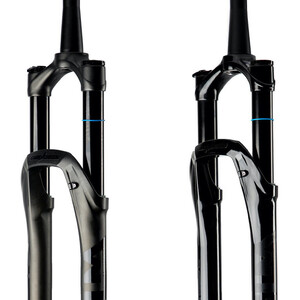
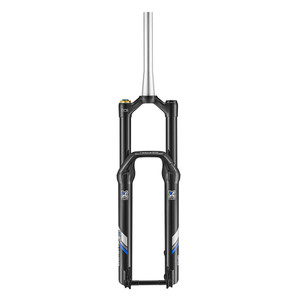


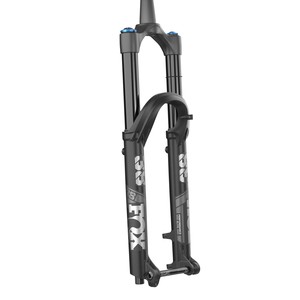
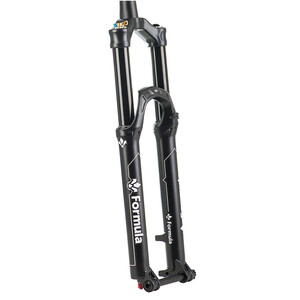
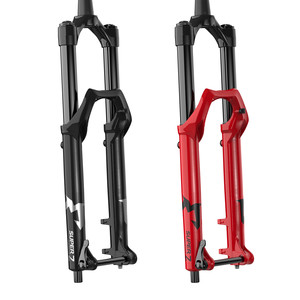







21 comments
Post a reply to: Tested: 2016 FOX Float 36 RC2 Fork